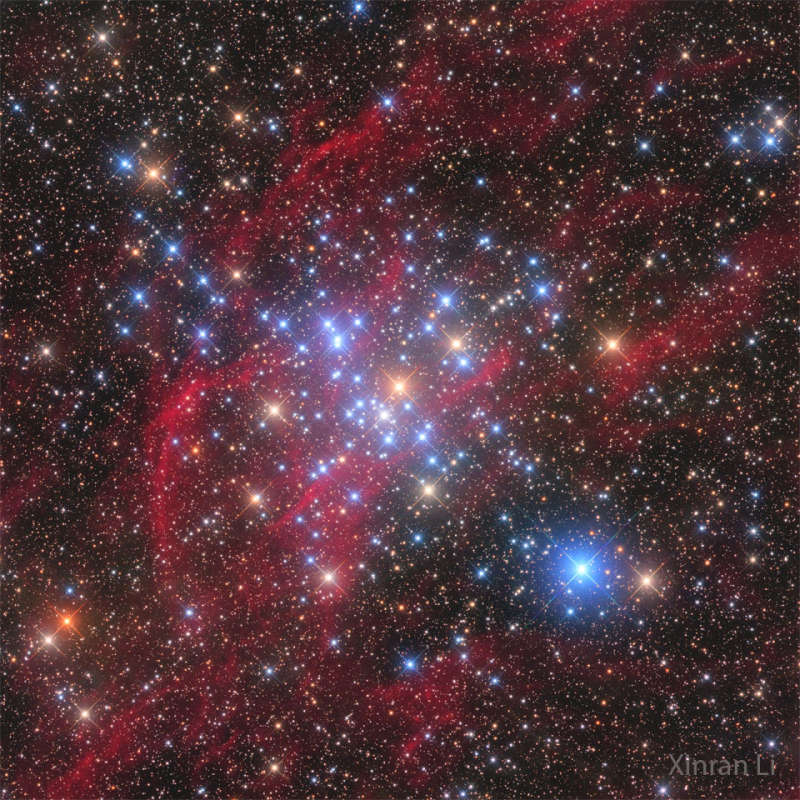Авторы и права: Синран Ли
Перевод: Д.Ю.Цветков
Пояснение:
Почему здесь так много ярких голубых звезд?
Обычно звезды рождаются в
скоплениях,
и самые яркие и массивные из них излучают голубой свет.
Менее яркие, не окрашенные в голубой цвет звезды, похожие на наше
Солнце,
также присутствуют в звездном скоплении
M41,
но их труднее увидеть.
Хорошо видны несколько звезд, выглядящих оранжевыми –
красные гиганты.
Красные волокна – свечение водорода, этот
цвет
выделен фильтром и усилен на изображении.
Через несколько миллионов лет яркие голубые звезды взорвутся как
сверхновые
и исчезнут.
Более слабые звезды двигаются по немного различающимся траекториям, поэтому
красивое
рассеянное скопление распадется.
Несколько миллиардов лет назад наше Солнце, вероятно, родилось в похожем на M41
звездном скоплении,
но с тех пор оно
удалилось
от своих
звезд-сестер.
Изображение
было получено на телескопе
Чилискоуп T2 в
Чили
с экспозицией в четыре часа.
1999 2000 2001 2002 2003 2004 2005 2006 2007 2008 2009 2010 2011 2012 2013 2014 2015 2016 2017 2018 2019 2020 2021 2022 2023 2024 2025 |
Январь Февраль Март Апрель Май Июнь Июль Август Сентябрь Октябрь Ноябрь Декабрь |
NASA Web Site Statements, Warnings, and Disclaimers
NASA Official: Jay Norris. Specific rights apply.
A service of: LHEA at NASA / GSFC
& Michigan Tech. U.
|
Публикации с ключевыми словами:
open cluster - Рассеянное скопление
Публикации со словами: open cluster - Рассеянное скопление | |
См. также:
Все публикации на ту же тему >> | |
